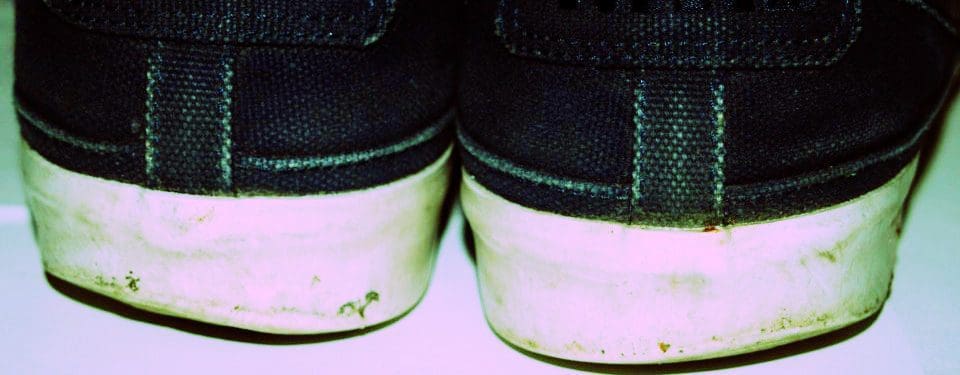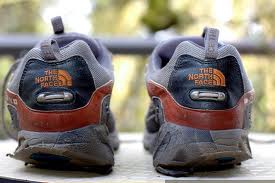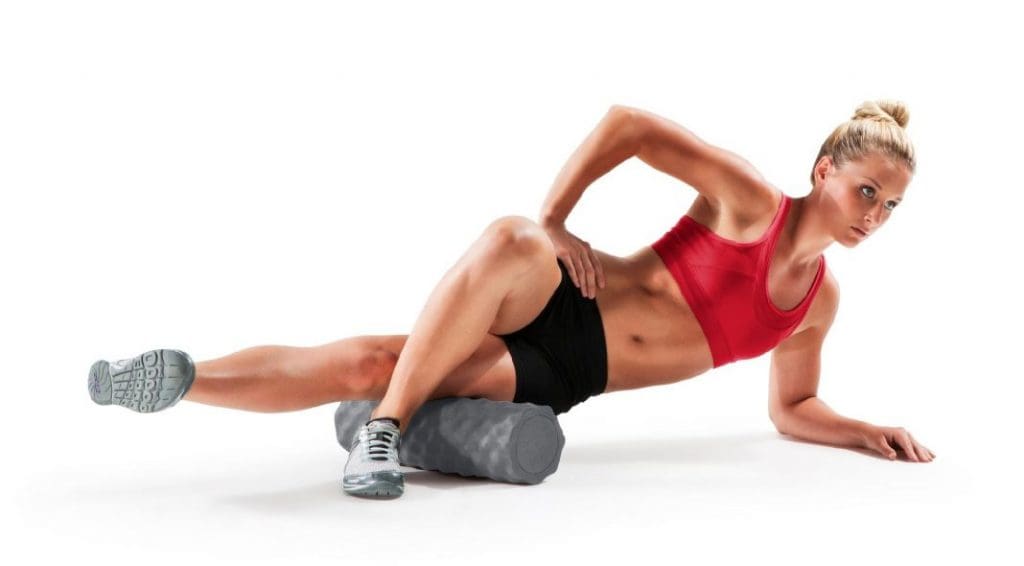Sports Chiropractor: To figure out what these professionals don’t want you to do before making an appointment, Runner’s World asked two chiropractors who specialize in running about what common training flaws are leading to patients ending up in their offices over and over again.
RELATED: When Should You See a Sports Chiropractor?
Table of Contents
DON’T Buy Shoes For Looks

While studies go back and forth on whether or not specific types of running shoes actually lead to injury, it’s still a good idea to opt for a proper fit over a pair of kicks that look cool or you got for cheap. Ian Nurse, D.C., founder of Wellness in Motion Boston and a sub-2:30 marathoner, believes that a lot of running injuries can start from not having the right shoes on your feet.
Nurse recommends going to a run specialty store and having someone watch your gait outside or on the treadmill. This will give someone at the store the ability to find a range of shoes that might work best for your specific running/walking mechanics. From there, you can go by what feels the best when you’re running. (You can find a nearby running store by checking out our Store Finder.)
RELATED: How to Buy the Right Running Shoes

Nurse said he also asks his patients if there has been a change in running shoes from one style to another. For example, switching to a zero-drop shoe from a normal shoe, without easing into them, may increase your risk of injury. Like a fitter at a running store, a sports chiropractor like Nurse may even look at your running gait in the office to diagnose imbalances in your foot’s motion mechanics.
“The whole biomechanics starts in your foot,” Nurse said. “We all have different foot strikes. If it hits the ground in a certain way, the shoe has to support that. If you are a forefoot striker, rearfoot striker, overpronator, or underpronator, all of those different types of foot strikes can lend itself to different running injuries.”
DON’T Do Static Stretching Before A Run

Holding a static stretch for longer than 10 seconds can take away from your explosive muscular power before a run, according to Derek Vinge, D.C. at Fit Chiropractic & Sports Therapy in Courtenay, British Columbia. One study even showed that stretching cold muscles before a tough 3K left individuals starting their runs slower and at a greater perceived effort. And when your muscles aren’t signaling properly, it can lead to small injuries turning into larger problems over time.
You are better off with a series of dynamic stretches—like lunges and squats—to get the blood flowing in the body. (This 2-minute warmup should do the trick.) The benefits will be noticeable if you add just five to 10 minutes of dynamic stretching before you hit the roads or trails.
“I forget to do a dynamic stretch as well, and I think maybe it is a time thing where you tell yourself ‘I’ll do this later. I’ll deal with it later,’” Vinge said. “If you do some activation and some dynamic warmups, you are going to be a stronger, faster runner.”
DON’T Overdo It On Foam Rollers

Foam rolling and other ways to work out a knot or refresh your legs can be a good thing—in moderation. But less sometimes is actually more, according to Nurse.
“I see a lot of people who tend to go overboard on that,” Nurse said. “They do so much foam rolling on their IT band and/or their quads, and then they are in even more pain. It’s more of like a finesse, where you are trying to get blood flow into the area, but you aren’t trying to beat up the area so badly that you are causing more damage.”
RELATED: 14 Foam Rollers, Balls, and Sticks to Work Knots Out
If you’re working out on a foam roller and something continues to hurt or gets worse, stop. Overdoing a problem spot may inflame it more. If you’re feeling relatively good, Nurse suggests doing some light work on the foam roller after a run to hit any problem areas for one to two minutes.
DON’T Clam Up When You Get Into The Office

You shouldn’t arrive to an office visit with pages and pages of notes from WebMD. But you shouldn’t be silent and just think a sports chiropractor has all the answers just by looking at you.
Going into an appointment, think about what has been consistently driving you crazy on a run—a stiff neck, a cranky left ankle—as that will allow a doc to focus on what’s really bothering you.
“Runners know their bodies a lot better than a lot of people,” Nurse said. “As we run we are constantly kind of checking in on different body parts, and people really are able to recognize what is wrong and they can tell if their gait is altered and what is hanging them up. The information I get from my patients helps me a lot.”
DON’T Forget To See Someone If You Need It & Listen To Your Sports Chiropractor

With training goals and miles to complete, runners often don’t admit when there is something wrong. It’s almost a badge of honor to stay off the table for long periods of time.
But Vinge thinks there’s more to what he does than fixing injuries. Once an underlying issue is taken care of, you can teach your body to perform at a higher level than you thought was possible.
“After they start to get better, then we can work on other issues to get some more performance out of them,” said Vinge. “If you’ve never been looked at, then you have no idea what’s going wrong.”
Post Disclaimer
Professional Scope of Practice *
The information on this blog site is not intended to replace a one-on-one relationship with a qualified healthcare professional or licensed physician and is not medical advice. We encourage you to make healthcare decisions based on your research and partnership with a qualified healthcare professional.
Blog Information & Scope Discussions
Welcome to El Paso's Premier Wellness and Injury Care Clinic & Wellness Blog, where Dr. Alex Jimenez, DC, FNP-C, a board-certified Family Practice Nurse Practitioner (FNP-BC) and Chiropractor (DC), presents insights on how our team is dedicated to holistic healing and personalized care. Our practice aligns with evidence-based treatment protocols inspired by integrative medicine principles, similar to those found on this site and our family practice-based chiromed.com site, focusing on restoring health naturally for patients of all ages.
Our areas of chiropractic practice include Wellness & Nutrition, Chronic Pain, Personal Injury, Auto Accident Care, Work Injuries, Back Injury, Low Back Pain, Neck Pain, Migraine Headaches, Sports Injuries, Severe Sciatica, Scoliosis, Complex Herniated Discs, Fibromyalgia, Chronic Pain, Complex Injuries, Stress Management, Functional Medicine Treatments, and in-scope care protocols.
Our information scope is limited to chiropractic, musculoskeletal, physical medicine, wellness, contributing etiological viscerosomatic disturbances within clinical presentations, associated somato-visceral reflex clinical dynamics, subluxation complexes, sensitive health issues, and functional medicine articles, topics, and discussions.
We provide and present clinical collaboration with specialists from various disciplines. Each specialist is governed by their professional scope of practice and their jurisdiction of licensure. We use functional health & wellness protocols to treat and support care for the injuries or disorders of the musculoskeletal system.
Our videos, posts, topics, subjects, and insights cover clinical matters and issues that relate to and directly or indirectly support our clinical scope of practice.*
Our office has made a reasonable effort to provide supportive citations and has identified relevant research studies that support our posts. We provide copies of supporting research studies available to regulatory boards and the public upon request.
We understand that we cover matters that require an additional explanation of how they may assist in a particular care plan or treatment protocol; therefore, to discuss the subject matter above further, please feel free to ask Dr. Alex Jimenez, DC, APRN, FNP-BC, or contact us at 915-850-0900.
We are here to help you and your family.
Blessings
Dr. Alex Jimenez DC, MSACP, APRN, FNP-BC*, CCST, IFMCP, CFMP, ATN
email: coach@elpasofunctionalmedicine.com
Licensed as a Doctor of Chiropractic (DC) in Texas & New Mexico*
Texas DC License # TX5807
New Mexico DC License # NM-DC2182
Licensed as a Registered Nurse (RN*) in Texas & Multistate
Texas RN License # 1191402
ANCC FNP-BC: Board Certified Nurse Practitioner*
Compact Status: Multi-State License: Authorized to Practice in 40 States*
Graduate with Honors: ICHS: MSN-FNP (Family Nurse Practitioner Program)
Degree Granted. Master's in Family Practice MSN Diploma (Cum Laude)
Dr. Alex Jimenez, DC, APRN, FNP-BC*, CFMP, IFMCP, ATN, CCST
My Digital Business Card


